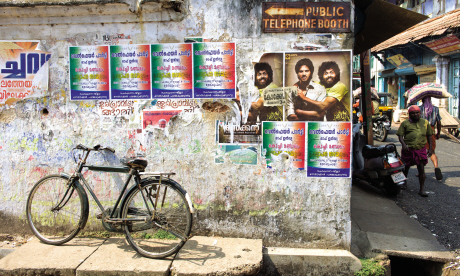
It’s great to see the big picture – but zooming in can create a more effective sense of place. Steve Davey gets you ready for your close ups
Sometimes you get so blown away by the big picture, you completely overlook the details that sum up the atmosphere of a place. For instance, the Taj Mahal is a mind-blowing building, but focusing on a single carving gives the best impression of the workmanship involved.
Textures can make pleasing detail shots, as can repeating patterns. Rather than snapping a whole elephant, shoot a patch of its crumpled skin; instead of photographing a palm tree, focus on the shadows the fronds cast on the beach; a jumble of chillies can evoke India just as well as the Taj.
To give such details a sense of place, compose your picture to include a recognisable object. Shoot from the side, not straight on, placing the subject against a significant background.
Get closer than a metre or so from your subject and focus can be an issue. The cameras best able to focus nearest are often simple compacts; many feature a close-up or macro mode. If using a DSLR, you’ll need a macro lens, which will allow you to get within a few centimetres of your subject.
You don’t need to get in close, though. Sometimes the flattened perspective given by shooting from a distance with a telephoto lens can accentuate patterns.
To get creative with detail, exploit your depth of field. Using a small aperture will render all of your shot in focus; a wide aperture (shallow depth of field) means only the element you actually focus on is sharp.
Note, shooting up close inherently gives a shallow depth of field. To counter this, use a very small aperture. This results in a slower shutter speed, which can cause camera shake. Use a tripod for stability or a handheld flash to introduce more light; a small reflector can also improve lighting, filling in dark shadows.
Look for repetitions of pattern and shape to create an interesting detail – this can be objects, or combinations of light and shadow.
Rather than just shooting something face on, experiment with shooting it from the side so that it recedes away . Focus on the closest part of the detail and then vary the aperture to alter the depth of field.
To get a real close up you might need to shoot with a macro lens. This allows you to focus much closer than a standard DSLR lens, giving you life-sized images. Many compact cameras have a built-in macro mode, which allows for extreme close-ups.
When confronted by an interesting subject, don’t just take endless versions of the whole thing: look for significant details that may be more powerful and atmospheric – in this case by zooming in.
Don’t just rush through a place: noticing details takes time and creativity. Travel slower and teach yourself to actually ‘see’ what it is that you’re looking at.
Control your depth of field. Either use a small aperture, so that everything is in focus,
or use a wide aperture, which will make the detail that you focus on stand out.
If you want to shoot close-up details with a DSLR, invest in a macro lens, which will allow you to get in closer. These are often quite small and will fit in the bottom of your camera bag.
Get paid to travel: become a travel photographer | Advice... More
10 photography rules for the road | Inspire me... More
Take a look at more travel photography articles by Steve Davey here | Contributors... More
25 tips for better travel photos | Inspire me... More
10 of the best compact cameras for travellers | Inspire me... More